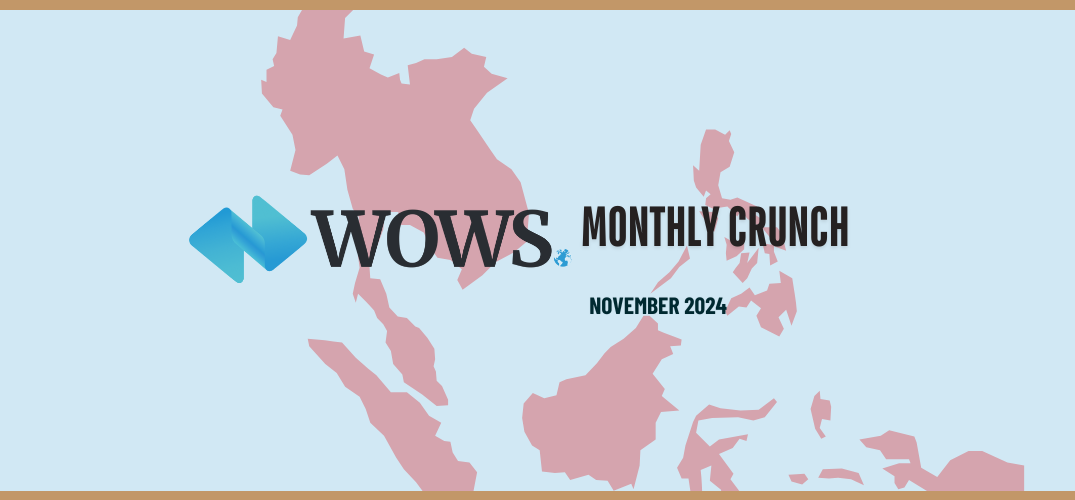Exploring the Challenges and Opportunities in the Philippine Startup Ecosystem
Philippine Startups Startup Ecosystem VC 6 minutes

With a population of 117 million, the Philippines presents a landscape teeming with opportunities, albeit at a stage that can only be described as "early." During a recent four-day immersion trip, Kingsen Yan, Head of Investment, dove deep into the local startup ecosystem. Guided by key players such as Luis Mauro Yap, Victor Rivera, John Young (Avion School), Dashlabs.ai (YC W21), and Rajiv Ayyangar, Kingsen explored the dynamics of this burgeoning market, uncovering the opportunities and challenges that define the Philippine startup scene.

The trip painted a picture of immense untapped potential but also highlighted the bottlenecks that have kept the Philippines from producing its first unicorn—a feat that neighboring countries like Indonesia have already achieved. So, what’s holding the ecosystem back, and what can propel it forward?
A Startup Scene Ripe with Opportunity
The Philippines is often compared to Indonesia due to similarities in population size, market potential, and the stage of its startup ecosystem. Yet, despite these parallels, the Philippines has yet to experience the same explosive growth that has catapulted Indonesian startups to global recognition.
What stands out most is the absence of a unicorn in the Philippine startup ecosystem. This raises an intriguing question: what’s holding the ecosystem back?

Challenges Facing the Philippine Startup Ecosystem
1. Regulatory BottlenecksThe regulatory environment in the Philippines can be a significant hurdle for startups. Bureaucratic red tape and inconsistent policies often deter both local and international investors from diving into the ecosystem. Without a more supportive regulatory framework, startups face challenges in gaining the traction they need to scale.
2. Limited Funding Diversity
Startup funding in the Philippines is largely driven by local conglomerates, many of which prioritize traditional industries over innovation. This approach not only limits the diversity of funding sources but also influences how startups develop and grow. A lack of robust venture capital or international funding options further compounds this issue, leaving many startups without the financial backing they need to thrive.
3. Talent Migration and Skill Gaps
The brain drain is a significant issue in the Philippines, with talented professionals often migrating to neighboring countries for better opportunities. Additionally, while the country’s BPO (Business Process Outsourcing) sector contributes significantly to GDP and offers stable careers, it also diverts talent away from entrepreneurial ventures. This talent gap makes it harder for startups to build the skilled teams required to scale their operations.
4. Limited Access to Global Networks
Unlike more established ecosystems, the Philippines faces challenges in connecting startups to global networks. This limits exposure to international markets, mentorship, and opportunities that could accelerate growth. Without these connections, many startups struggle to gain the competitive edge needed to scale internationally.

What Can Unlock the Philippines’ Potential?
Despite these challenges, the Philippines is ripe for exponential growth in the coming decade. As Kingsen noted, with the right amount of attention from international investors, the country has the potential to become a hotbed for innovation. Here are some factors that could help unlock this growth:
-
Government Support
Developing policies that support startups, offering tax incentives, and reducing bureaucratic hurdles could significantly improve the ecosystem’s attractiveness to investors and founders alike. -
Funding Diversity
Encouraging the entry of international VCs and angel investors can provide startups with more funding options and help them grow without being overly reliant on local conglomerates. -
Talent Retention and Upskilling
Initiatives that promote entrepreneurship, along with programs to upskill local talent, can help address the brain drain and build a stronger talent pool for startups. -
Global Partnerships
Building bridges with international startup hubs, accelerators, and investors can give Philippine startups the exposure they need to scale globally.

A Bright Future on the Horizon
Even with the challenges, there’s much to explore in the Philippines’ startup ecosystem. Its growing middle class, tech-savvy population, and untapped market opportunities position it as a region poised for growth. While it may be early to predict when the country will see its first unicorn, the potential is undeniable.
As Kingsen aptly put it:
“Get this right, and you’re not just solving a pain point—you’re unleashing a wave of financial inclusion and innovation that could reshape the region.”
With sustained efforts from local stakeholders and increased interest from global investors, the Philippines could very well emerge as the next major player in the Southeast Asian startup scene.

Final Thoughts
The Philippine startup ecosystem is at an exciting juncture. While challenges exist, the opportunities far outweigh them. For investors, entrepreneurs, and policymakers, now is the time to collaborate and build an ecosystem that not only thrives but leads the region in innovation.
What’s your take? We’d love to hear your thoughts on the Philippines’ startup landscape. Drop us a comment or reach out to discuss how we can collectively unlock the country’s immense potential.
Ready to connect with innovative startups in the Philippines and beyond?
Explore more insights and opportunities on the WOWS Global Investment Portal today!
Related Posts
-

SEA PE VC November 24 6 minutes
WOWS Global: November 2024 Highlights – Resilience, Innovation, and the Road to 2025
November 2024 showcased resilience and innovation across Southeast Asia's private equity and startup ecosystem. From impactful investment highlights to groundbreaking ventures and upcoming events, WOWS Global dives into the trends and insights shaping the region's transformative journey toward 2025. -

MENA Startup Ecosystem Venture Capital WOWS GLOBAL Expansion 5 minutes
WOWS GLOBAL Marks Its Entry into the MENA Region
WOWS GLOBAL steps into the MENA region's vibrant startup ecosystem with promising insights and connections. Discover the potential for growth and investment dynamics directly from the Step Conference.
